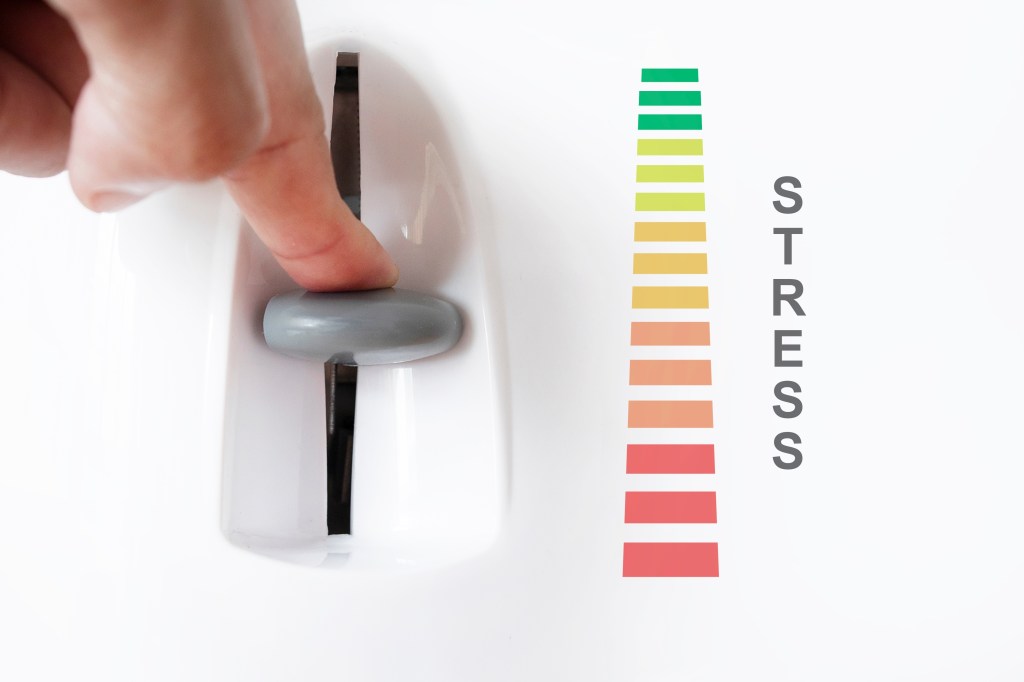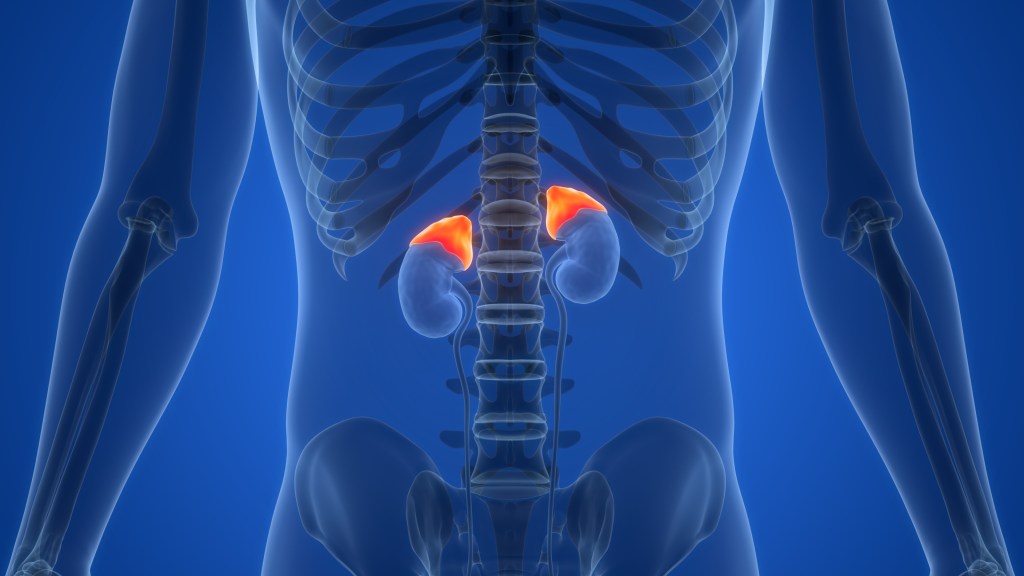At a glance
Cortisol is the body’s primary stress hormone and an essential regulator of metabolism, immune activity, and energy levels. While it’s normal for cortisol to fluctuate throughout the day, certain lifestyle factors can disrupt its natural rhythm, potentially contributing to sleep disturbances, elevated stress levels, and irregular metabolic markers. Supporting hormonal balance through targeted diet and lifestyle practices may help promote healthier cortisol levels.
What is cortisol, and is it important?
Cortisol is a key stress hormone that controls the fight-or-flight response and regulates many other essential functions, including immune defenses, inflammation, and metabolic processes.
Learn why cortisol balance is crucial for overall health and discover the diet and lifestyle habits that can influence cortisol levels to support better energy, mood, and resilience.
What is cortisol, and how does it work?
Cortisol is a steroid stress hormone produced by the adrenal glands in response to signals from the brain.
When the body perceives a stressor, the hypothalamus releases corticotropin-releasing hormone (CRH), which signals the pituitary gland to trigger the adrenal glands to release cortisol into the bloodstream.
Once released, cortisol circulates throughout the body and binds to specific cellular receptors in nearly every organ system.
By binding to these receptors, cortisol affects gene expression and modulates many vital functions, including regulating metabolism, supporting growth processes, and controlling the immune system.
One of cortisol’s primary roles is to support the body’s fight-or-flight response. It does this by triggering gluconeogenesis, a process in the liver that increases blood glucose levels to provide quick energy for responding to a stressor.
In addition, cortisol mobilizes immune cells and activates anti-inflammatory pathways, preparing the body for potential injury or infection as part of the overall stress response.
Watch the video below to discover the number one sign of elevated cortisol.
What causes cortisol to rise and fall?
Cortisol levels naturally rise and fall throughout the day as part of the circadian rhythm. Levels of cortisol typically peak in the early morning to promote alertness and gradually decline in the evening to support better sleep.
However, various internal and external factors can also affect cortisol levels beyond the sleep-wake cycle.
The body responds to physical and emotional stress, such as illness, trauma, or anxiety, by signaling the adrenal glands to release cortisol in an attempt to help it overcome the perceived threat.
In addition, high doses of steroid medications can elevate cortisol levels, while dietary and lifestyle habits also play a role in maintaining hormonal balance and directly impact cortisol regulation.
Frequent consumption of refined carbohydrates and sugars can lead to spikes and crashes in blood glucose levels. The body perceives these blood sugar fluctuations as stress, prompting increased cortisol production to help stabilize energy levels.
Similarly, overexercising without adequate recovery time puts physical strain on the body, keeping cortisol levels persistently elevated and interfering with rest, repair, and hormone balance.
Prolonged cortisol release can lead to adrenal exhaustion and inadequate cortisol release. As a result, individuals may shift from elevated to low cortisol levels, both of which can trigger various health issues.

Signs of high cortisol
Cortisol directly impacts cellular functions and plays a vital role in regulating many critical physiological processes.
Therefore, too much cortisol, whether triggered by chronic stress, medication use, or poor dietary habits, can significantly disrupt the body’s natural rhythms and contribute to a range of symptoms.
Here are common signs and symptoms of high cortisol levels:
- Muscle weakness
- Facial puffiness
- Slow wound healing
- High blood pressure
- Unexplained weight gain
- Female facial hair
- Thinning skin
- Mood changes
- Insomnia
- Headaches
- Digestive issues
If you experience any symptoms indicative of elevated cortisol, it’s vital to consult a healthcare provider, as these may be signs of an underlying condition such as Cushing’s syndrome, which requires medical evaluation and prompt treatment.

Signs of low cortisol
Too little cortisol can disrupt metabolic energy production, cardiovascular function, immune responses, and overall hormonal balance, which can lead to various health issues.
Here are common signs of low cortisol levels:
- Fatigue and weakness
- Poor stress tolerance
- Low blood pressure
- Dizzines
- Unexplained weight loss
- Salt cravings
- Low blood sugar levels
- Irritability or depression
- Darkening of the skin
Depending on the underlying cause, signs of elevated cortisol may appear before symptoms of low cortisol develop, which is a pattern typically associated with adrenal fatigue.
Research published in StatPearls suggests that low cortisol may also be linked to Addison’s disease, also known as primary adrenal insufficiency, which requires medical treatment to replace missing adrenal hormones.
In addition, inadequate cortisol release can also be caused by secondary adrenal insufficiency, often due to a pituitary tumor or other problems that impair effective adrenal gland function.
If you suspect low cortisol, it’s important to consult a healthcare provider who will likely perform a physical exam and order blood tests to evaluate adrenal functions and cortisol levels.

Health effects of cortisol imbalance
Both too much and too little cortisol can disrupt many critical bodily functions, increasing the risk of potentially serious health problems.
One consequence of persistently elevated cortisol levels is cortisol resistance, a condition in which cells become less responsive to circulating cortisol.
This impairs cortisol’s ability to regulate balanced immune responses and metabolic pathways, which can lead to chronic inflammation, poor immune cell function, insulin resistance, and increased risk of metabolic syndrome.
A study published in Physiological Reports summarizes, “Imbalanced cortisol production is implicated in the development of chronic conditions such as coronary heart disease, stroke, diabetes, high blood pressure, and mental illness.”
Cortisol imbalance can also directly impact the production and activity of thyroid hormones, steroid hormones, and other stress hormones such as adrenaline, which can trigger a cascade of hormonal imbalances and associated health issues.
Because cortisol influences nearly every cell in the body, both elevated levels and deficiency can have widespread and potentially harmful effects on overall health.
In fact, evidence published in Clinical Endocrinology found that prolonged irregular cortisol patterns are directly linked to increased risk of premature death, especially in older adults.

6 ways to support healthy cortisol levels
Maintaining optimal cortisol levels is vital for overall health and well-being, and various dietary and lifestyle strategies can help promote adrenal function and support hormonal balance.
Here are seven ways to support healthy cortisol levels.
1. Incorporate relaxation techniques
Chronic stress puts a considerable strain on the body and stimulates the adrenal glands to produce cortisol in excess.
While it’s impossible to avoid all life stressors, implementing effective stress management techniques is one of the most crucial aspects of supporting cortisol balance.
Deep breathing practices, gentle movement, spending time in nature, connecting with loved ones, and engaging in hobbies can help counteract day-to-day stress and promote a calm nervous system.
Evidence published in Psychoneuroendocinology confirms the beneficial effects of relaxation, reporting that stress management interventions positively influence cortisol levels.
2. Follow Healthy Keto®
“Frequent blood sugar fluctuations, linked to high-carb and processed foods, can strain adrenal function and are an often overlooked root cause of irregular cortisol patterns,” explains Dr. Berg.
Healthy Keto® is a nutrient-dense, low-carb diet that emphasizes nourishing fats, high-quality protein, organic vegetables, and full-fat dairy. This approach helps stabilize blood sugar and reduces insulin spikes, which eases the burden on the adrenal glands.
By minimizing blood sugar fluctuations, Healthy Keto supports more balanced cortisol rhythms, improved energy levels, and better mood regulation.

3. Nourish the adrenal glands
The adrenal glands contain the highest concentrations of vitamin C in the human body, indicating the importance of this essential nutrient in regulating the body’s stress response.
Vitamin C is required to synthesize cortisol from cholesterol, and a vitamin C deficiency can impair the adrenal glands’ ability to produce and release this vital stress hormone.
Consuming plenty of vitamin C-rich foods such as bell peppers, kale, broccoli, cabbage, and Brussels sprouts is an excellent strategy for supporting adrenal health and cortisol balance.
4. Limit stimulants
Stimulants such as caffeine, alcohol, and energy drinks can trigger significant cortisol spikes, which can disrupt natural cortisol rhythms, interfere with sleep, and strain adrenal function.
Reducing or replacing stimulants with calming alternatives such as herbal teas or sugar-free kombucha can support better hormonal balance and stress resilience.
5. Stay physically active
While excessive and prolonged endurance exercises can contribute to cortisol imbalances, gentle movement and moderate physical activity have been linked to more balanced cortisol release.
Staying physically active helps combat stress, promotes better sleep, supports metabolic balance and aids in maintaining a healthy weight, all of which play a vital role in optimal adrenal health.

6. Prioritize sleep
A study published in Brain, Behavior, and Immunity found that acute sleep deprivation triggered elevated cortisol levels, while chronic lack of sleep is associated with low plasma cortisol concentrations.
This highlights the importance of maintaining a healthy sleep schedule to support cortisol regulation and overall hormonal balance.
Consistently getting seven to nine hours of restful sleep helps regulate the circadian rhythm, promotes cortisol balance, and allows for effective adrenal recovery.
7. Eat celery before bedtime
Celery is a rich source of minerals such as magnesium, potassium, and calcium, which help calm the nervous system and support a healthy stress response. These minerals also support the body’s natural rest-and-digest state, vital for reducing cortisol at night.
In addition, celery contains phthalides, a group of natural plant compounds that may dilate blood vessels and support circulation, which can help improve nutrient delivery to the adrenal glands.
Key takeaways
- What is cortisol, and why is it so important? Cortisol is the body’s primary stress hormone and influences blood sugar balance, blood pressure, energy levels, and inflammation.
- Cortisol naturally fluctuates throughout the day, but factors such as chronic stress, poor sleep, stimulants, and high-carbohydrate eating can disrupt this rhythm and contribute to imbalances.
- Signs of cortisol imbalance may include changes in mood, energy, sleep, appetite, blood pressure, blood sugar levels, and weight.
- Supporting balanced cortisol levels involves consistent stress-management practices, restorative sleep, and a nutrient-dense, low-carb diet such as Healthy Keto.
- Gentle physical activity and limiting stimulants such as caffeine and alcohol can further support healthier cortisol patterns.
FAQ
1. What is cortisol?
Cortisol is the body’s primary stress hormone, produced by the adrenal glands in response to stressful events, injury, or trauma.
It plays a crucial role in regulating metabolic processes, supporting immune function, and managing the body’s overall stress response by facilitating increased energy demands during the fight-or-flight state.
2. What does cortisol do to your body?
Cortisol influences nearly every cell, tissue, and organ in the body. It helps regulate blood sugar levels, control inflammation, support immune function, and manage how the body utilizes energy during stress.
Additionally, cortisol plays a role in maintaining healthy blood pressure, blood sugar regulation, and hormone balance.
3. How can I reduce cortisol?
To reduce elevated cortisol, it’s critical to reduce stress, prioritize quality sleep and light physical activity, and limit stimulants such as alcohol and caffeine.
In addition, following a low-carb, nutrient-rich diet helps stabilize blood sugar levels and supports adrenal health, further promoting balanced cortisol production.
4. What happens if cortisol is low?
Low cortisol levels can lead to fatigue, weakness, dizziness, unexplained weight loss, low blood pressure, and difficulty managing stress.
In addition, adrenal glands that don’t produce enough cortisol increase the risk of adrenal insufficiency, a potentially serious condition that requires medical treatment and hormone replacement therapy.
5. What triggers cortisol release?
The body releases cortisol in response to physical or psychological stress, including injury, illness, emotional strain, infections, and blood sugar fluctuations.
Cortisol production is also regulated by the body’s circadian rhythm, with levels typically peaking in the morning to mobilize energy, which supports wakefulness and prepares the body for the day ahead.
6. What is cortisol resistance?
Cortisol resistance occurs when the body’s cells become less responsive to cortisol, often due to prolonged exposure to high cortisol levels. This blunted cellular response impairs cortisol’s ability to regulate inflammation, metabolic pathways, and stress.
Sources
- https://www.ncbi.nlm.nih.gov/books/NBK441994/
- https://pmc.ncbi.nlm.nih.gov/articles/PMC7749606/
- https://onlinelibrary.wiley.com/doi/abs/10.1111/j.1365-2265.2009.03552.x
- https://pubmed.ncbi.nlm.nih.gov/37879237/
- https://www.sciencedirect.com/science/article/abs/pii/


















